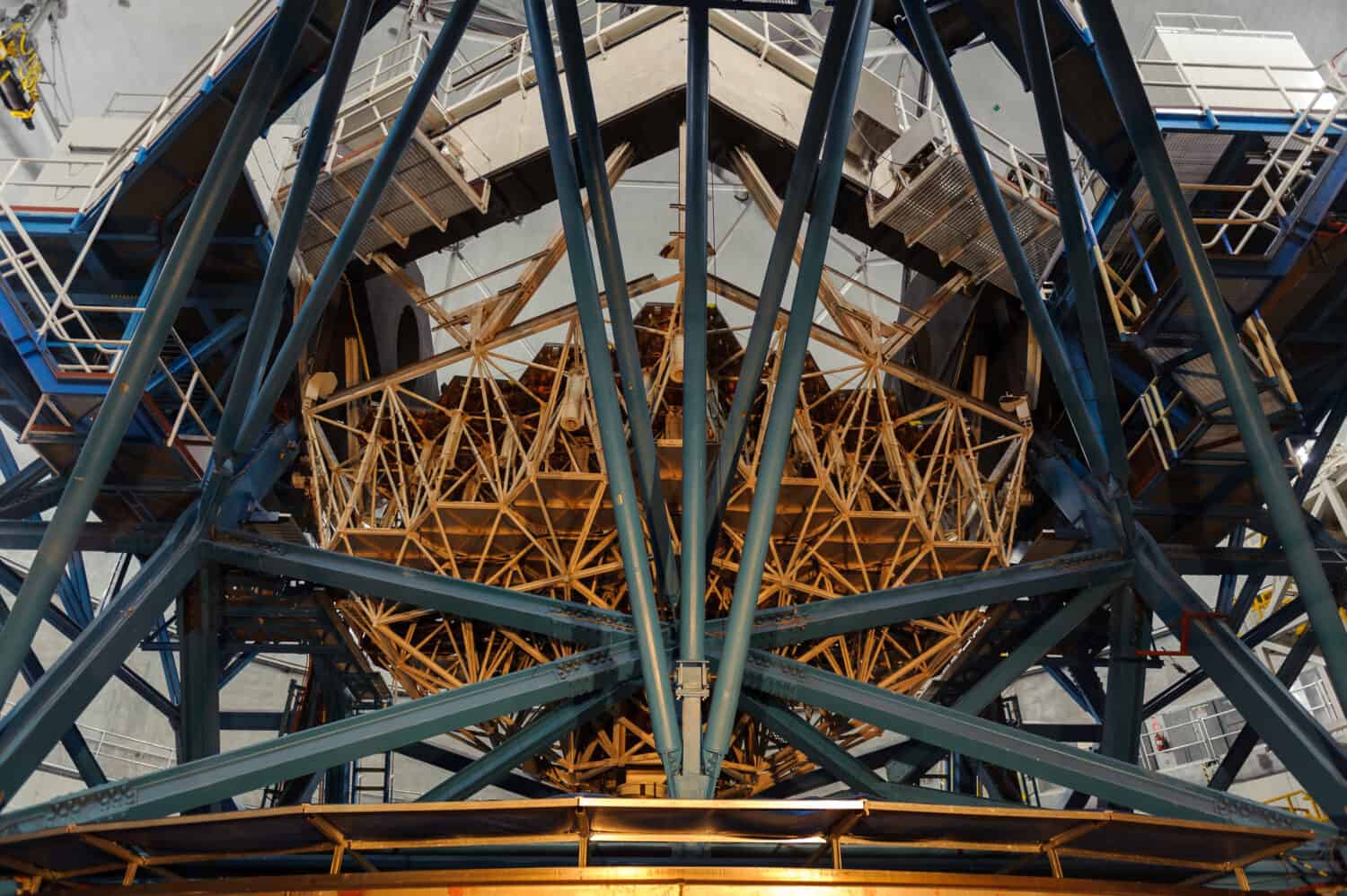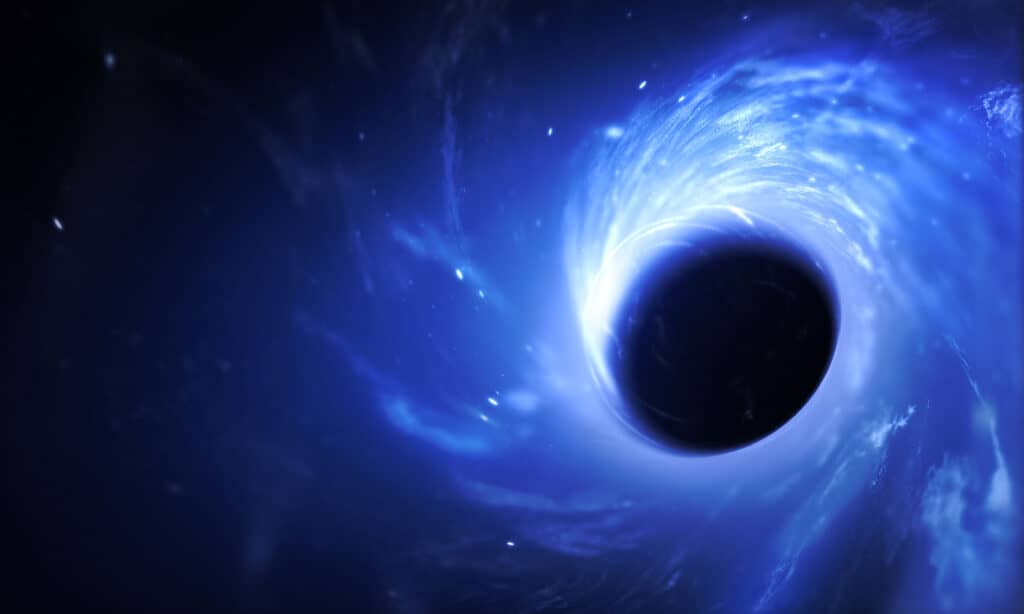Atop Mauna Kea in Waimea, Hawaii, stands the largest telescope in the United States, the W. M. Keck Observatory. Peering deep into the cosmic abyss, it’s a triumph of human ingenuity, curiosity, and relentless pursuit of knowledge. Since its inception, the observatory has broadened our understanding of the universe, shedding light on celestial wonders and mysteries. Discover the history of the Keck Observatory, its technological features, significant discoveries, ongoing projects, and more!
A Brief History of the Keck Observatory
The story of the Keck Observatory is a testament to William Myron Keck’s love of the stars. A successful oil prospector and the founder of Superior Oil Company, Keck had an uncanny instinct for locating petroleum. His philanthropic endeavors led to the birth of the W. M. Keck Foundation, which bankrolled projects such as the Keck Observatory, creating a new frontier in our exploration of the cosmos.
Thus was Keck immortalized in the larger story of knowledge-seeking by looking up. Astronomy has always influenced human civilization. It’s shaped our understanding of time through celestial-based calendars. Guided maritime and arctic explorers via stellar navigation. And prompted technological advancements with tools like telescopes. As such, the science of stargazing continues to alter our perception of our place and role in the universe.

The moving parts of each Keck telescope are massive at 270 tons.
©Josip Pastor/Shutterstock.com
The Keck Observatory: Technological Features and Innovations
The Keck Observatory houses two telescopes, Keck I and Keck II, among the largest globally. Designed with altitude-azimuth configurations, their mirror segments counter gravity for stable observations. Their primary mirrors are 10 meters in diameter, slightly smaller than the world’s largest, the Gran Telescopio Canarias (GTC). However, Keck’s design funnels all light to the secondary mirror, yielding a greater effective light-collection area than GTC. This makes them arguably Earth’s largest steerable, optical/infrared telescopes.
Keck’s primary mirrors comprise 36 hexagonal Zerodur glass-ceramic segments, each 1.8 meters wide and 7.5 centimeters thick. Active optics technology enables these segments to function as one mirror, with computer control maintaining surface shape accuracy to four nanometers. This greatly helps to counter gravity and environmental influences.
The observatory is also equipped with cameras and spectrometers for extensive visible and near-infrared observations. These include the High Resolution Echelle Spectrometer (HIRES), which analyzes light intensity across thousands of color channels. This has contributed to numerous discoveries, such as extrasolar planets, as well as providing evidence supporting the Big Bang theory.
Keck Observatory’s Achievements and Discoveries
With its advanced functions, the Keck Observatory has contributed to several groundbreaking discoveries in modern astronomy. These range from distant galaxies to dark matter, continually expanding our understanding of the universe. Some of the most significant discoveries made by Keck include:
Closest Known Black Hole to Earth
Using the Keck Observatory and the Gemini North telescope, astronomers discovered the closest known black hole to our planet, named Gaia BH1. Located 1,560 light-years away from Earth in the constellation Ophiuchus, Gaia BH1 is three times closer to us than the previous record-holder.
Starlight from Two Massive Galaxies
For the first time, scientists captured images of starlight from two massive galaxies hosting actively growing black holes, or quasars, from less than a billion years after the Big Bang.
Existence of a Planet Post-Star Death
Astronomers from the University of Hawaii Institute discovered that not all planets in other solar systems face doom as their host stars age.
Direct Image of a Low-Mass Planet
Astronomers using the Keck Observatory discovered one of the lowest-mass planets whose images have been directly captured.
Gravitational Lensing of a Supernova
Astronomers captured a bizarre image of a supernova, the powerful explosion of a star, whose light was so warped by the gravity of a galaxy that it appears as multiple images in the sky. (First observed by Cal Tech’s Zwicky Transient Facility and verified by Keck and others.)
Direct Image of Ancient Galaxy Recycling Gas
Astronomers found direct evidence of ancient galaxies that support star formation by recycling gas from previous stars.
First Detection of Radio Waves from a Type 1a Supernova
A team of astronomers led by Stockholm University discovered an unusual Type 1a supernova, or thermonuclear supernova called SN 2020eyj. It was the first confirmed white dwarf star that pulled material from a nearby star.
Solitary Life for Young Stars at the Milky Way’s Center
Stars living closest to the supermassive black hole at the center of the Milky Way have no stellar companions.
Star Swallowing a Planet Whole
For the first time, astronomers caught a star in the act of swallowing a planet whole.
Direct Image of a Super-Jupiter
Using Keck, astronomers developed a new method for finding exoplanets, resulting in a direct image of a Jupiter-like gas giant located 132.8 light-years away in the constellation Cygnus.
First-Ever 3D Map of the Messier 87 Galaxy
A UC Berkeley-led team of astronomers has for the first time measured the three-dimensional shape of Messier 87 (M87). M87 is one of the biggest and closest elliptical galaxies to us.

Black holes are often found at the center of galaxies. They are the most massive objects in the known Universe.
©iStock.com/Petrovich9
Current Keck Observatory Projects and Future Prospects
The Keck Observatory remains at the forefront of technological advancement as we look toward the future. Projects like the Keck Cosmic Reionization Mapper (KCRM) and the Keck Planet Finder will further enhance the observatory’s capabilities. The Keck Planet Finder, in particular, offers the tantalizing prospect of discovering exoplanets like Earth.
The Keck Cosmic Reionization Mapper (KCRM) is a novel instrument for probing post-Big Bang mysteries. Grandly, this period is called the Epoch of Reionization. It encompasses when the first stars and galaxies began to form. During this era, potent radiation emitted by celestial bodies penetrated the universe’s dense cool hydrogen fog.
KCRM is a major upgrade to the Keck Cosmic Web Imager (KCWI). Together, they can take images in wavelengths of light that are visible to humans. KCWI covers the blue side of the visible spectrum (wavelengths ranging from 350 to 560 nanometers). KCRM covers the red side (wavelengths ranging from 560 to 1080 nanometers). Equipped with both a blue and a red arm, the instrument has the capacity to peer back 10 to 12 billion years, observing the Epoch of Reionization. It can also capture images of the cosmic web, the vast gas strands connecting galaxies.
In addition to early galaxies and the cosmic web, these instruments can examine other phenomena, such as dark matter.
Keck Observatory’s Significance to Astrobiology
The Keck Observatory has significantly contributed to astrobiology, investigating life’s origin, evolution, and distribution in the universe. The twin Keck telescopes can see further into the cosmos than any other current research facility. This capability has made the Keck Observatory a critical tool for astrobiologists around the world.
Keck’s data have informed numerous studies supported by the NASA Astrobiology Program. Its observations have been used to acquire direct images of giant exoplanets. It has studied water in comets within the Solar System, revealed clues about the composition of ice at the surface of Jupiter’s moon Europa, and taken part in many other scientific studies relevant to astrobiology research.
One of the key contributions of the Keck Observatory to astrobiology is its role in exoplanet research. The discovery and characterization of exoplanets, planets orbiting stars outside our solar system, are central to understanding the potential for life elsewhere in the universe. Using the Keck Planet Finder, a high-resolution spectrograph designed to detect low-mass exoplanets, scientists can detect Earth-like planets in the habitable (or “Goldilocks”) zones of nearby stars. This provides a new and exciting direction in the search for life beyond our solar system.
Educational Impact
Beyond its contribution to astronomy, the Keck Observatory plays a pivotal role in fostering a culture of science appreciation and understanding. Through educational events like the Journey Through the Universe and Triple Whammy, it provides hands-on experiences to over 1,000 K-12 students each year. Moreover, the observatory actively engages with the broader public through its monthly Astronomy Talk Series, Open House events, and a virtual online community called Keck Nation.
Visiting the Keck Observatory
Unlike many observatories in its class, the Keck Observatory opens its doors to the public. However, the instruments themselves are not open to the public. Still, visitors can drive (with a 4-wheel-drive vehicle) to the nearly 14,000-foot summit of Mauna Kea to visit the Keck Observatory’s gallery, learn about ongoing research, and participate in stargazing programs. But be warned: the high altitude and extreme weather require precautions and a four-wheel-drive vehicle. The headquarters in Waimea offers group activities for children and educational exhibits, making the Keck Observatory an exciting destination for families and astronomy enthusiasts alike.

The Gran Telescopio Canarias is the largest optical telescope in the world.
©Montserrat Alejandre/Shutterstock.com
Other Varieties of Largest Telescopes
Largest Public Telescope In the United States
The largest public telescope in the United States is the 100-inch Hooker Telescope located at the Mount Wilson Observatory in California. The Hooker Telescope, named after John D. Hooker, who funded its construction, was the world’s largest telescope from 1917 to 1949. It was on this telescope that Edwin Hubble made his groundbreaking discoveries that led to the understanding of the expansion of the universe. Today, the telescope is available for public viewing and educational programs. It provides a unique opportunity for the public to observe the cosmos through a historic instrument.
The Largest Telescope in the World
The Gran Telescopio Canarias (GTC), also known as the Great Canary Telescope, located in Spain’s Canary Islands, holds the title of the world’s largest single-aperture optical telescope. The GTC, with a primary mirror diameter of 10.4 meters (34.1 feet), is part of the Roque de los Muchachos Observatory, one of the world’s leading astronomical observatories. The GTC offers public viewing sessions, making it the largest public telescope worldwide. Visitors can observe celestial bodies through the same instrument used by scientists to make significant astronomical discoveries.
Largest Terrestrial Telescope in Progress
The Extremely Large Telescope (ELT), currently under construction by the European Southern Observatory (ESO), is set to become the world’s largest terrestrial telescope. The ELT, located on Cerro Armazones in Chile’s Atacama Desert, will have a primary mirror measuring an impressive 39 meters (128 feet) in diameter. As of July 2023, the construction of the ELT was approximately 50% complete. Like Keck, the ELT will be equipped with advanced adaptive optics systems, allowing it to produce images 16 times sharper than those from the Hubble Space Telescope. The ELT will enable astronomers to study the universe in unprecedented detail, from the properties of exoplanets to the nature of dark matter and dark energy.
Largest Flying Telescope
The Stratospheric Observatory for Infrared Astronomy (SOFIA) is the world’s largest airborne observatory. SOFIA, a NASA and German Aerospace Center project, is a 2.7-meter telescope on a modified Boeing 747SP. Operating at altitudes above 99% of Earth’s atmospheric water vapor, it enables infrared observations of celestial events, unhindered by atmospheric interference. Its mobility allows global observations, while grounding after each flight facilitates regular technological upgrades.
Conclusion
The Keck Observatory exemplifies human innovation and exploration spirit. As the US’s largest telescope, it has broadened our cosmic understanding and significantly contributed to astrobiology and exoplanet research. It helps inch us closer to the pivotal question: “Are we alone in the universe?” Through educational outreach, it inspires future scientists and astronomers. It thus welcomes astronomers, cosmic students, and stargazing enthusiasts to join in exploring our extensive, magnificent universe.
The photo featured at the top of this post is © Meister Photos/Shutterstock.com
Thank you for reading! Have some feedback for us? Contact the AZ Animals editorial team.







